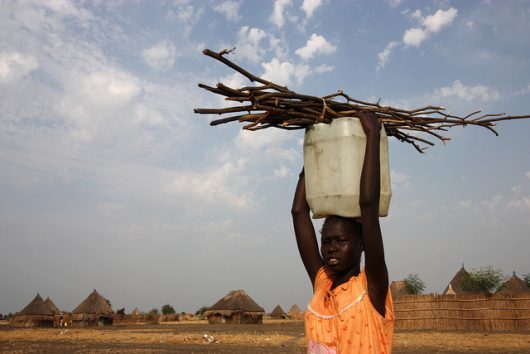10 Facts About South Sudanese Refugees

The Sudanese civil war ended with South Sudan’s successful secession referendum. The referendum effectively split Sudan in two. Less than two years later, South Sudan was plunged into its own three-year civil war. As a result, South Sudan, the youngest country in the world, now has the largest refugee crisis in Africa. Here are 10 facts about South Sudanese refugees.
- One and a half million South Sudanese have been forced to leave their homes and seek refuge in neighboring countries, predominantly Uganda, Ethiopia, Sudan and other eastern sub-Saharan African countries.
- The South Sudanese civil war sparked from a falling out between President Salva Kiir, an ethnic Dinka, and Vice President Riek Machar, an ethnic Nuer. As a result, 3.5 million people have lost their homes.
- As violence began to escalate in the capital city of Juba in July 2016, the rates of displaced refugees have continued to rise. On average, 63,000 people are displaced every month.
- Ninety percent of the South Sudanese refugees are women and children. Human rights groups have found that both Dinka and Nuer forces have killed civilians, raped thousands of women, and forcefully recruited children to fight in their armies.
- Food security is a real problem in South Sudan. According to the World Food Program, 40 percent of the population is in desperate need of food assistance. The Sudanese government is unable to feed its population because it has diverted most of its resources to fighting rebel forces.
- The international community warns that the growing humanitarian crisis has the potential to become the worst global famine in 70 years.
- One million people are on the brink of extreme hunger, 2.9 million faces a food crisis that will likely escalate into a famine, while more than 7.5 million South Sudanese are in need of food assistance.
- In order to prevent the impending famine, the international community would need to come up with $4.4 billion by the end of March. As of Mar. 29, 2017, only 10 percent of that goal has been reached.
- In the midst of this impending famine, the government is planning to build a $10 billion new capitol building in Ramciel. However, if the construction was postponed and the funding was allocated as humanitarian assistance, the famine could be averted.
- Uganda has received the most South Sudanese refugees. The country’s handling of the steady inflow of 3,000 refugees per day is impressive. Refugees are allowed access to farmland and shelter, ensuring integration into Ugandan society. The people of Uganda do not want the refugees to become isolated in camps with no opportunity to branch out and join the greater Ugandan community.
If the South Sudanese government continues with its new capital project and the international community remains unsuccessful in accruing the $3.9 billion funding gap necessary to end the famine, then this humanitarian crisis will continue to develop and complicate poverty in sub-Saharan Africa, likely becoming one of the largest humanitarian crises of our time.
– Josh Ward
Photo: Flickr
